Combat environments ranged from the fetid jungles of Guadalcanal to the frozen wastes of Attu and Kiska.
Throughout it all, fighting men on both sides battled to the death for their particular ideologies.
United States
John Cantius Garandbegan design work on what was to become theM1 riflein 1924.

U.S. Marines hit the beach with M1 Carbines during the Battle of Saipan.
The U.S. Army adopted the weapon in 1936.
It officially entered service a year later.
The M1 fired a full-sized 7.62x63mm/.30-06 round.
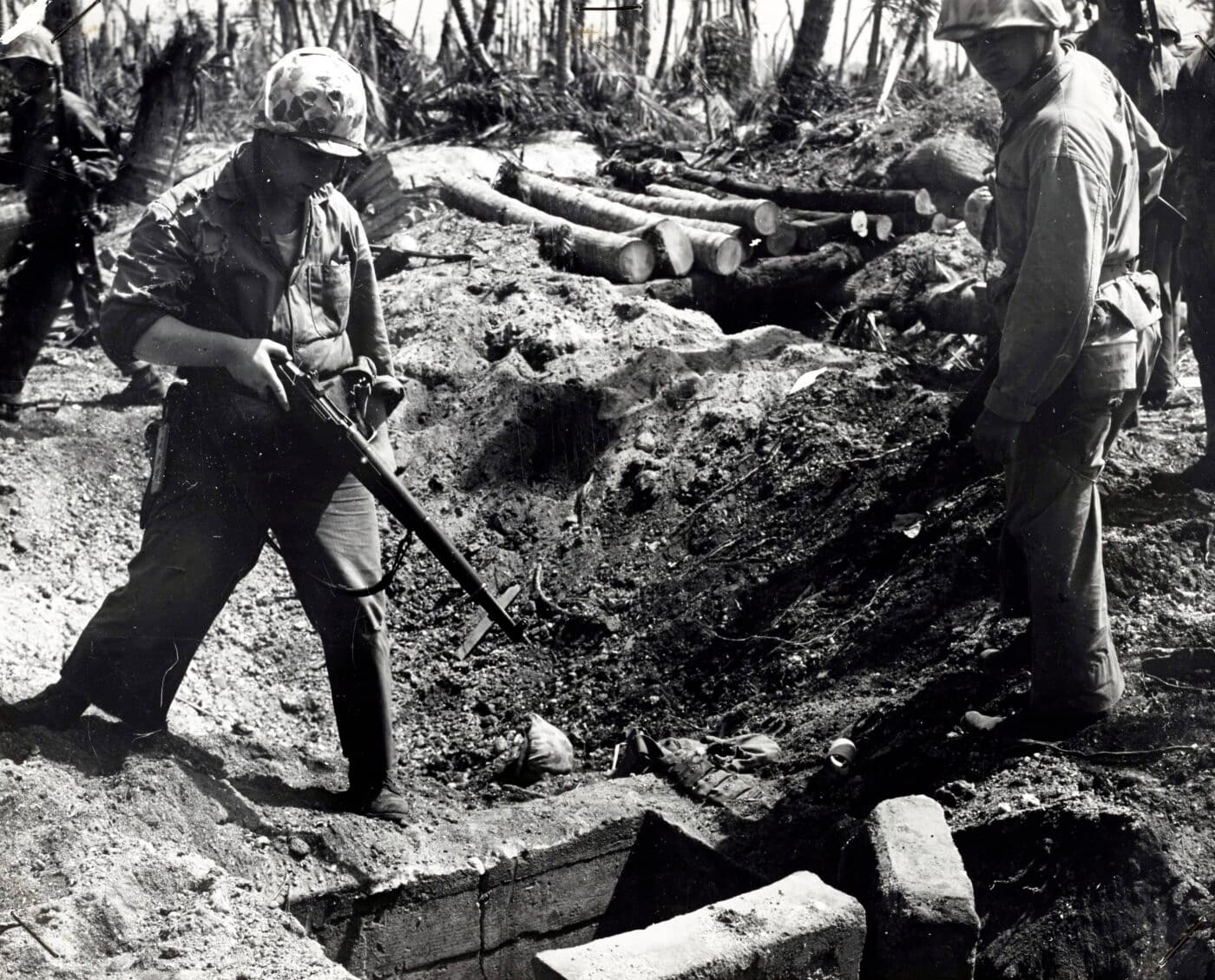
A U.S. Marine inspects a Japanese beach bunker. He is carrying the staple of the U.S. military in World War II: the M1 Garand.
The riflefed from an eight-round en bloc clipthat ejected automatically on the last round fired.
The semi-automatic M1 was indeed the most capable battle rifle of the war.
U.S. troops appreciated the M1s penetration in heavy jungle foliage.
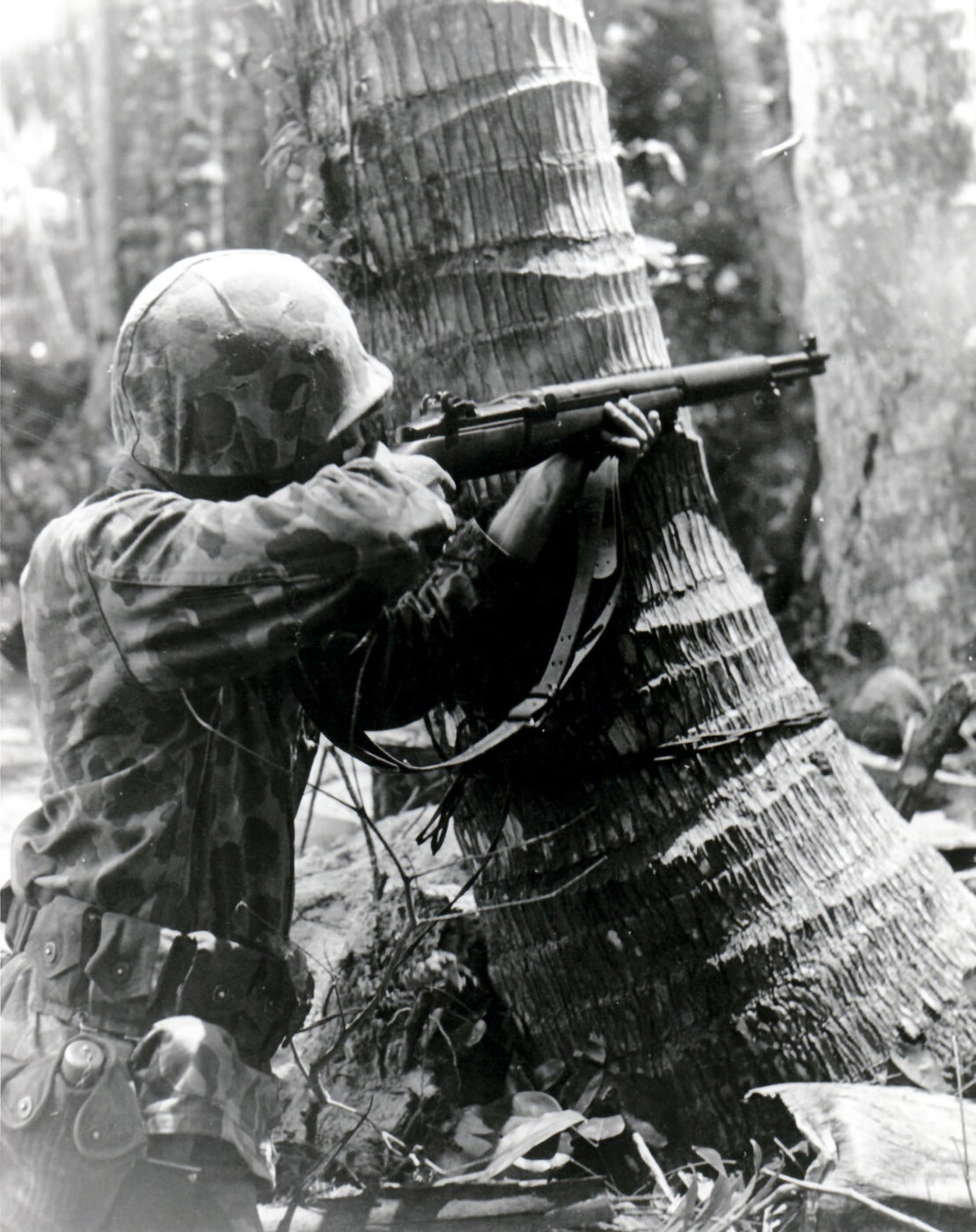
A U.S. Marine fires his M1 Garand during the Bougainville Campaign on Puruata Island in November 1943.
While the M1 was powerful, reliable, and mean, it also weighed 9.5 lbs.
empty and was nearly 44 long.
The resultingM1 Carbineweighed a paltry 5.8 lbs.
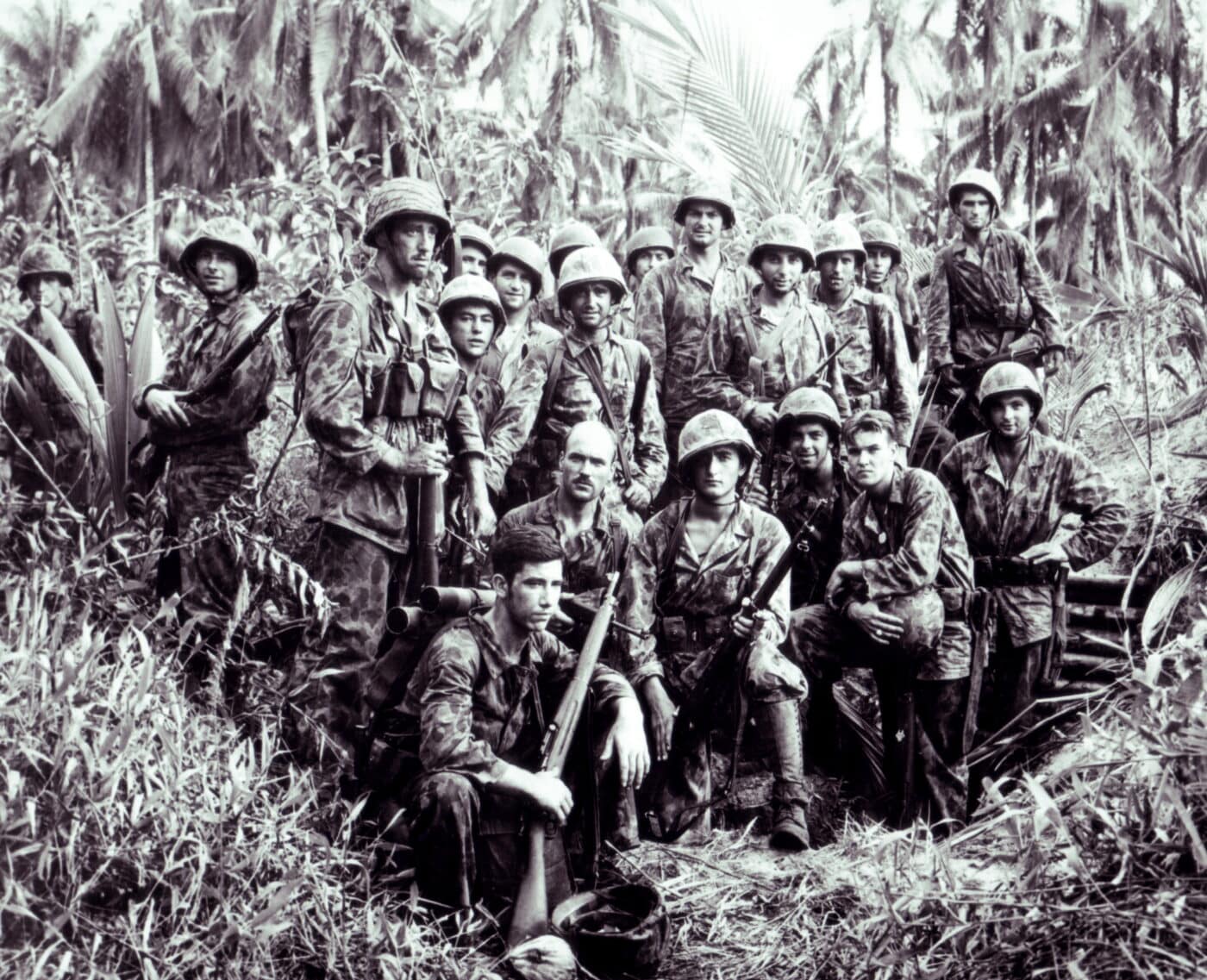
When the U.S. Marines entered the Solomon Islands campaign, many were equipped with the M1903 Springfield rifle instead of the modern M1 Garand.
Those early semi-automatic carbines fed from 15-round detachable box magazines and fired a straight-walled 7.62x33mm cartridge.
The carbine was intended to supplant the handgun, not the rifle.
As a PDW (Personal Defense Weapon), the carbine was indeed a prescient design.
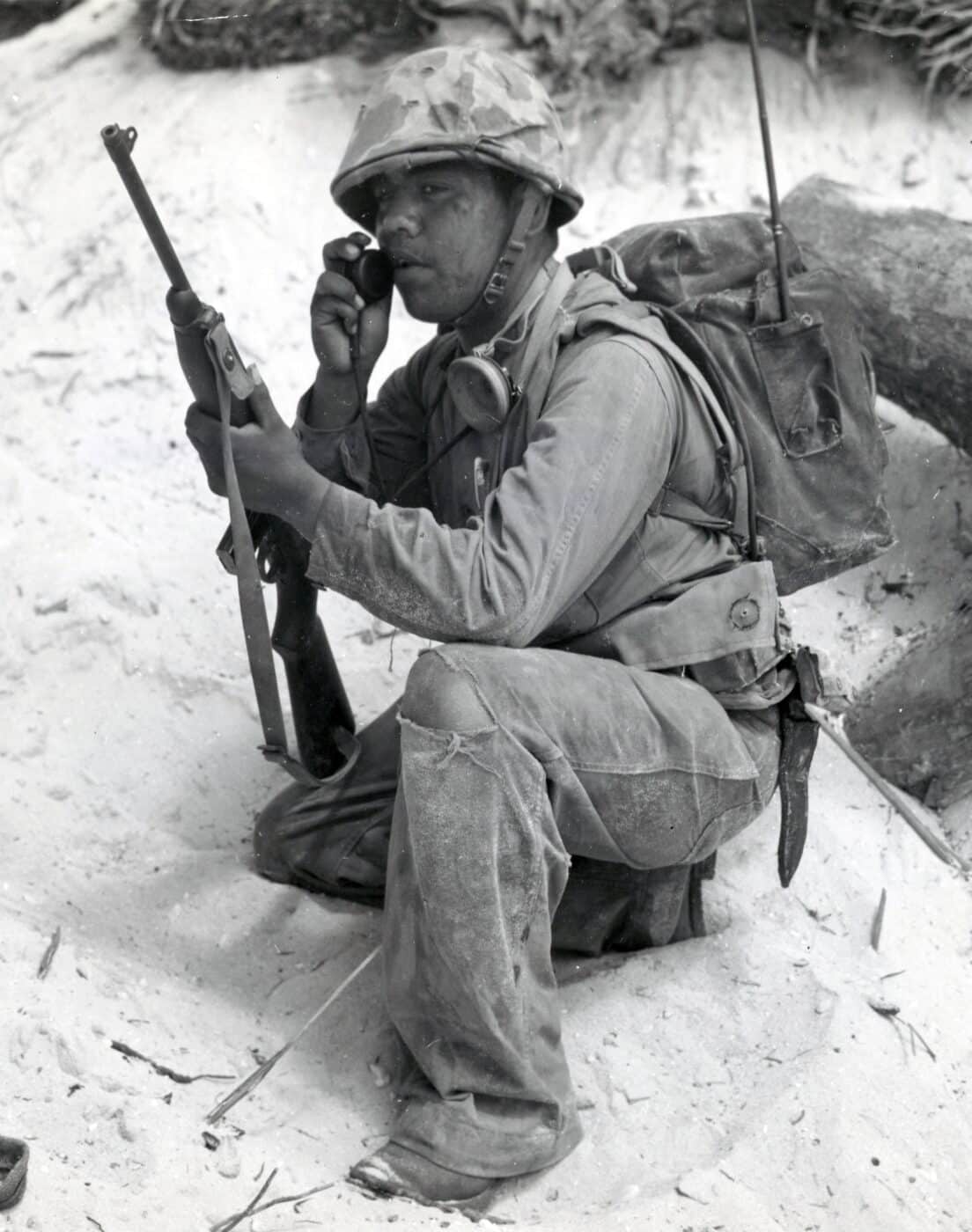
This U.S. Marine holds his M1 Carbine while making a radio transmission during the Battle of Tarawa in Operation Galvanic.
For close quarters applications in jungles, caves, and tunnels, the carbine excelled.
They fought alongside U.S. forces until the two atomic bombs ended the war.
Standard infantry rifles across the Commonwealth forces were sundry variations of the bolt-action Lee-Enfield.
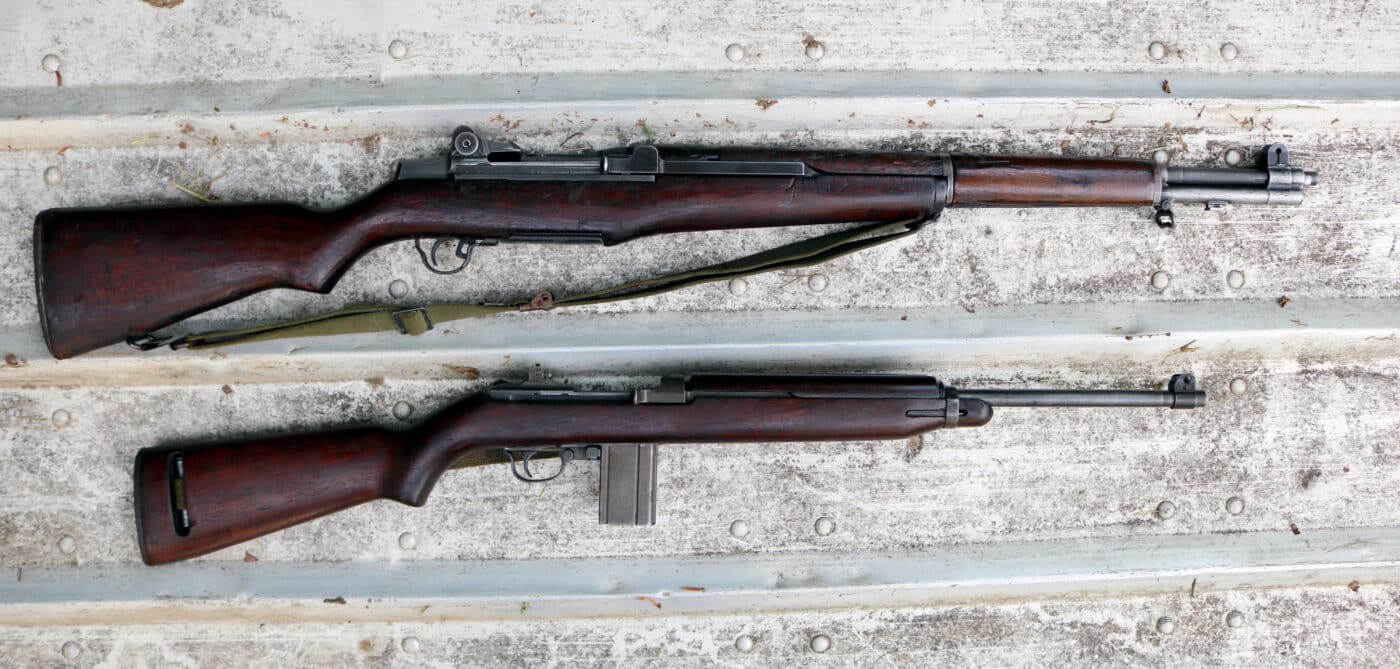
The M1 Garand (top) and the M1 Carbine complemented each other during the Pacific War. Despite similar designations, the buttplate screw was the only part common to both weapons.
Variations of the Lee-Enfield served from 1895 until 1957.
The basic rifle evolved through several Marks.
The SMLE (Short Magazine Lee-Enfield) Mk III was the standard British infantry weapon of WW1.
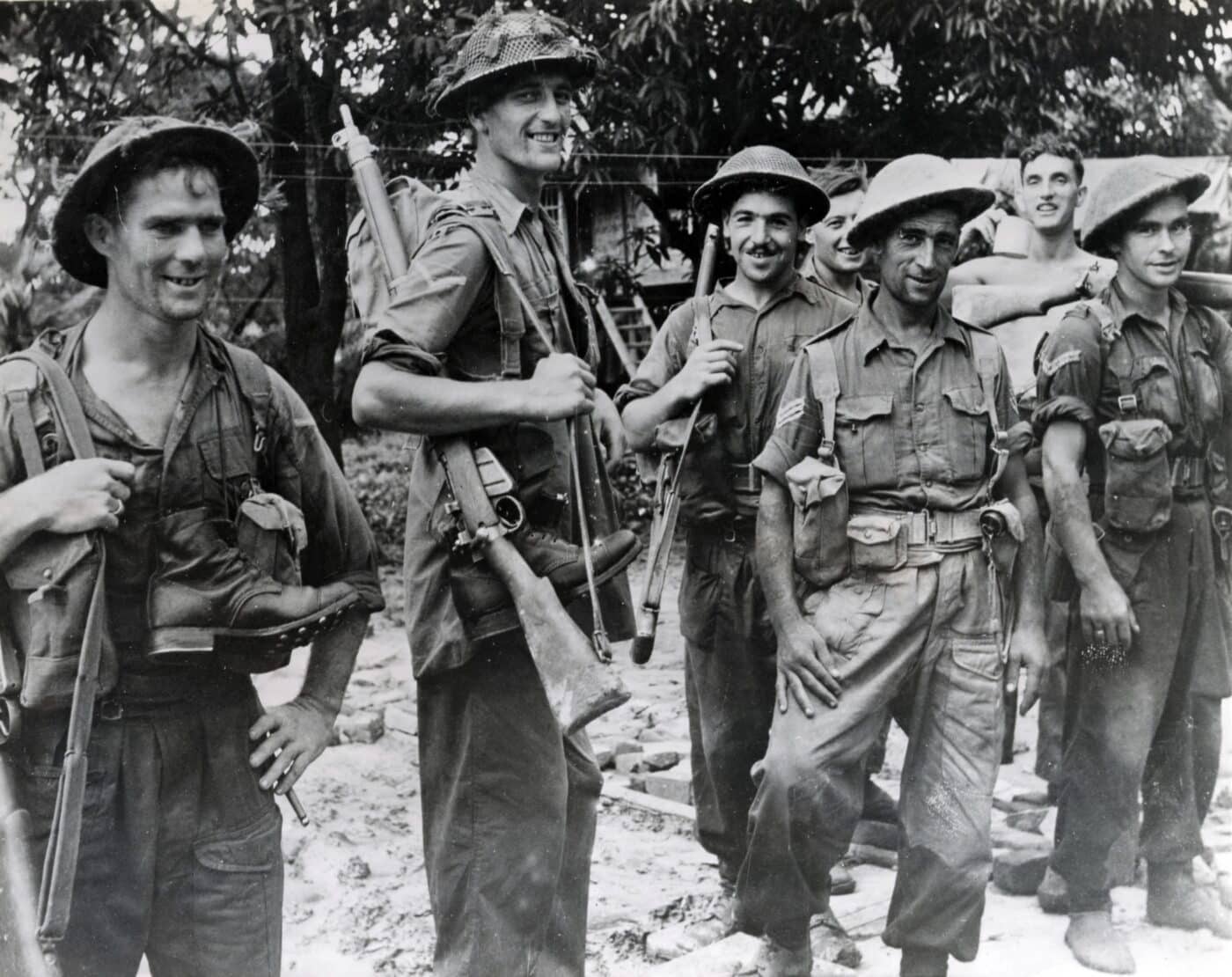
Many Commonwealth troops were equipped with various versions of the Lee-Enfield rifle.
British Tommies affectionately referred to them as Smellies.
All Lee-Enfield rifles fed from detachable 10-round box magazines.
However, most loading was still undertaken via stripper clips from the top.
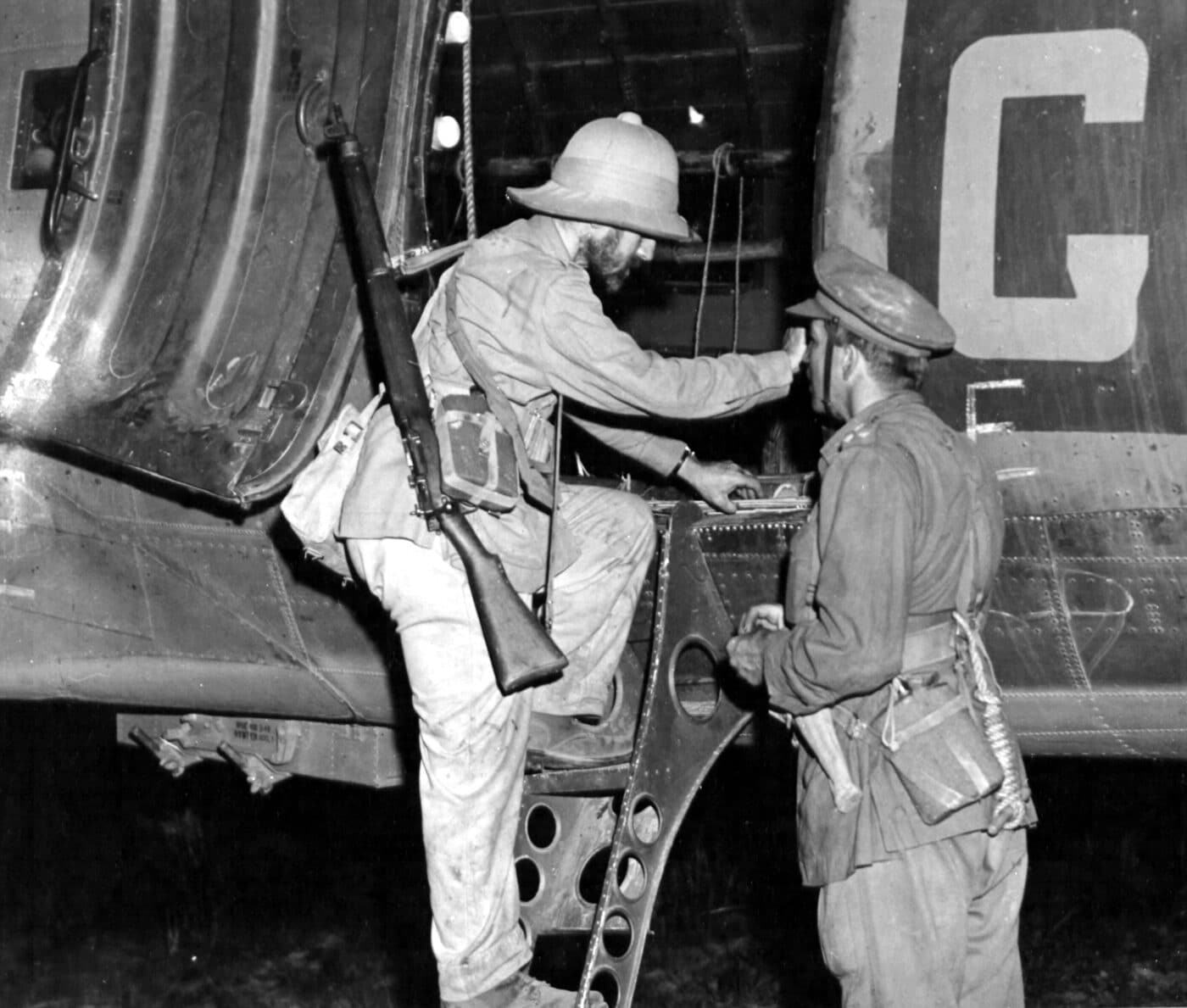
Major General Orde Charles Wingate boards a plane with his SMLE. Wingate died in 1944 when his B-25 Mitchell crashed in northeast India.
Some versions even had their magazines affixed to the rifle with a short length of chain.
Early WWI-vintage SMLEs included a sliding magazine cutoff that effectively turned the rifle into a single-shot weapon.
This feature was wisely deleted in short order.
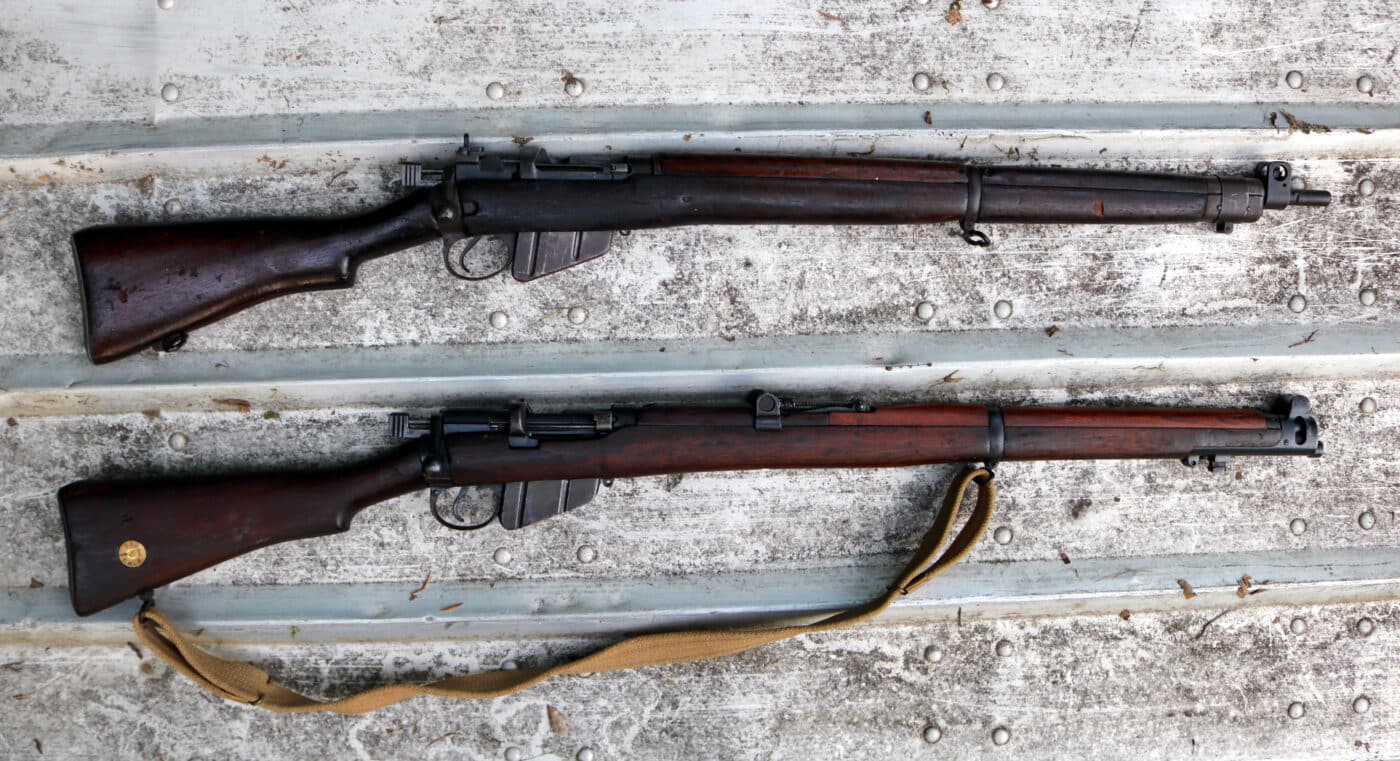
The SMLE (bottom) served alongside the subsequent Lee-Enfield No 4 Mk I throughout the Pacific campaigns.
The SMLE was a superb riflemans tool, but it was expensive.
4 Mk I sported a simplified sighting system and redesigned barrel.
The SMLE has a characteristic flat-nosed appearance, while the No.
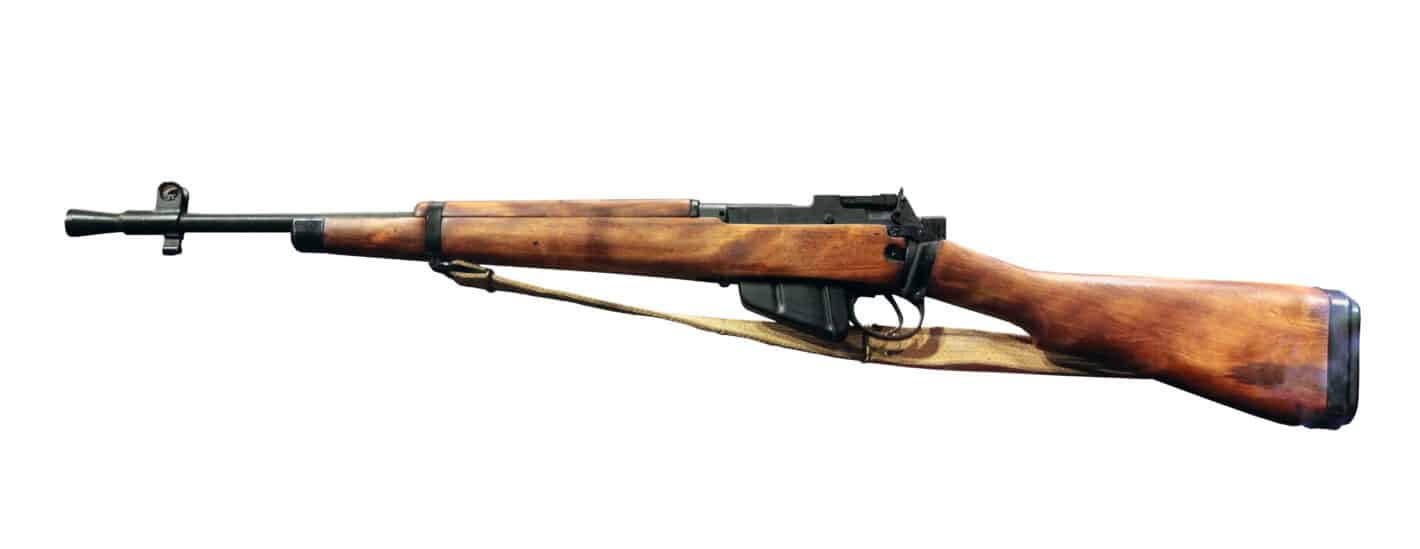
The Lee-Enfield No 5 Mk I “Jungle Carbine” was specifically designed for close quarters operations. Photo by Rama,used with permission.
4 Mk I sports a stubby bit of barrel out the front.
Both weapons were comparably effective in action.
4 Mk I was the more recent design, many Commonwealth troops used the SMLE throughout the Pacific War.
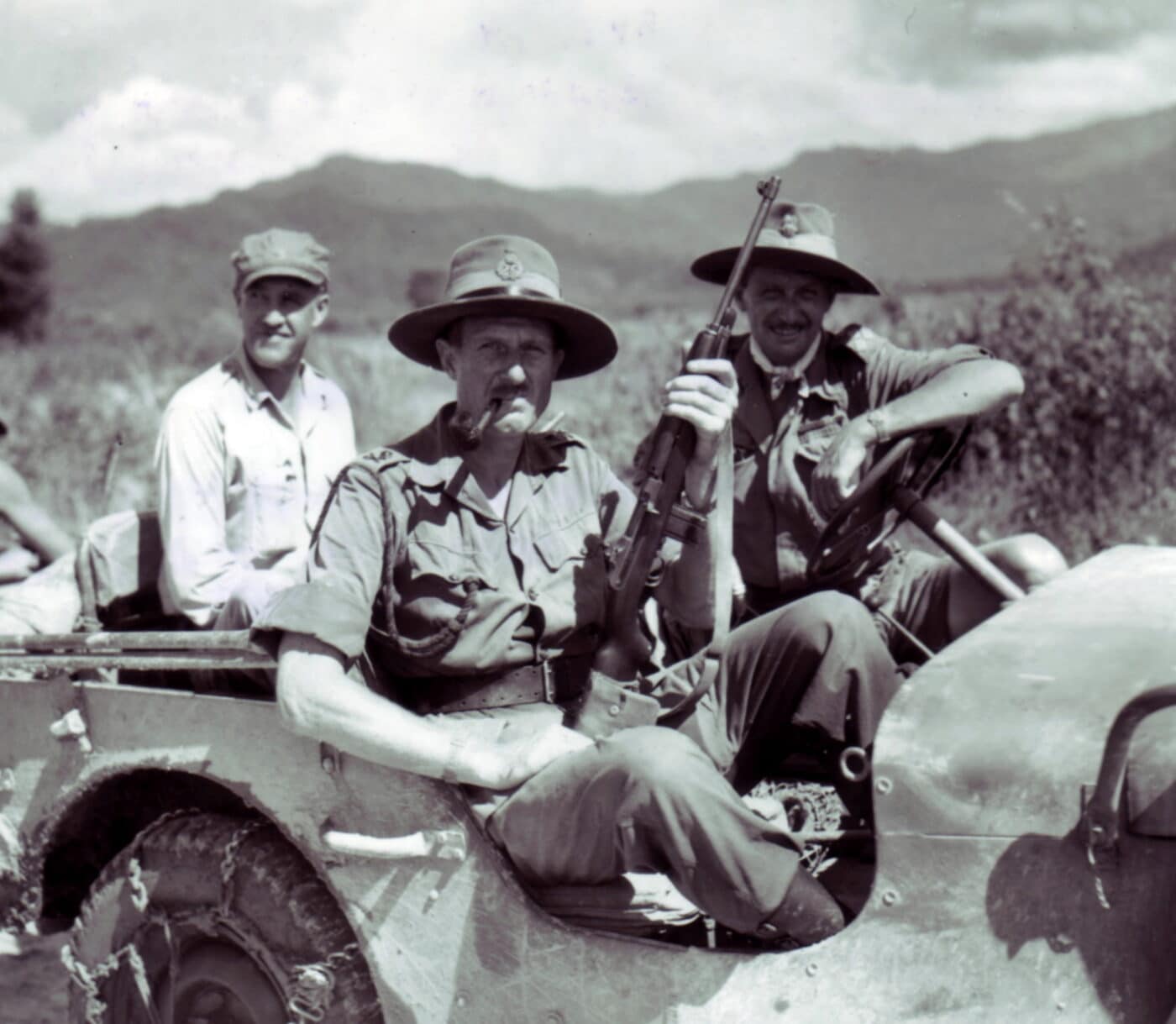
Not every member of the Commonwealth carried a Lee-Enfield. Brigadier General Hugh Stockwell is pictured here with an M1 Carbine.
While British production focused on the later weapon, the Indians and Australians manufactured the SMLE throughout the war.
Australia did not retire the SMLE until the late 1950s.
Canadians first saw action during the battle for Hong Kong on December 8, 1941.
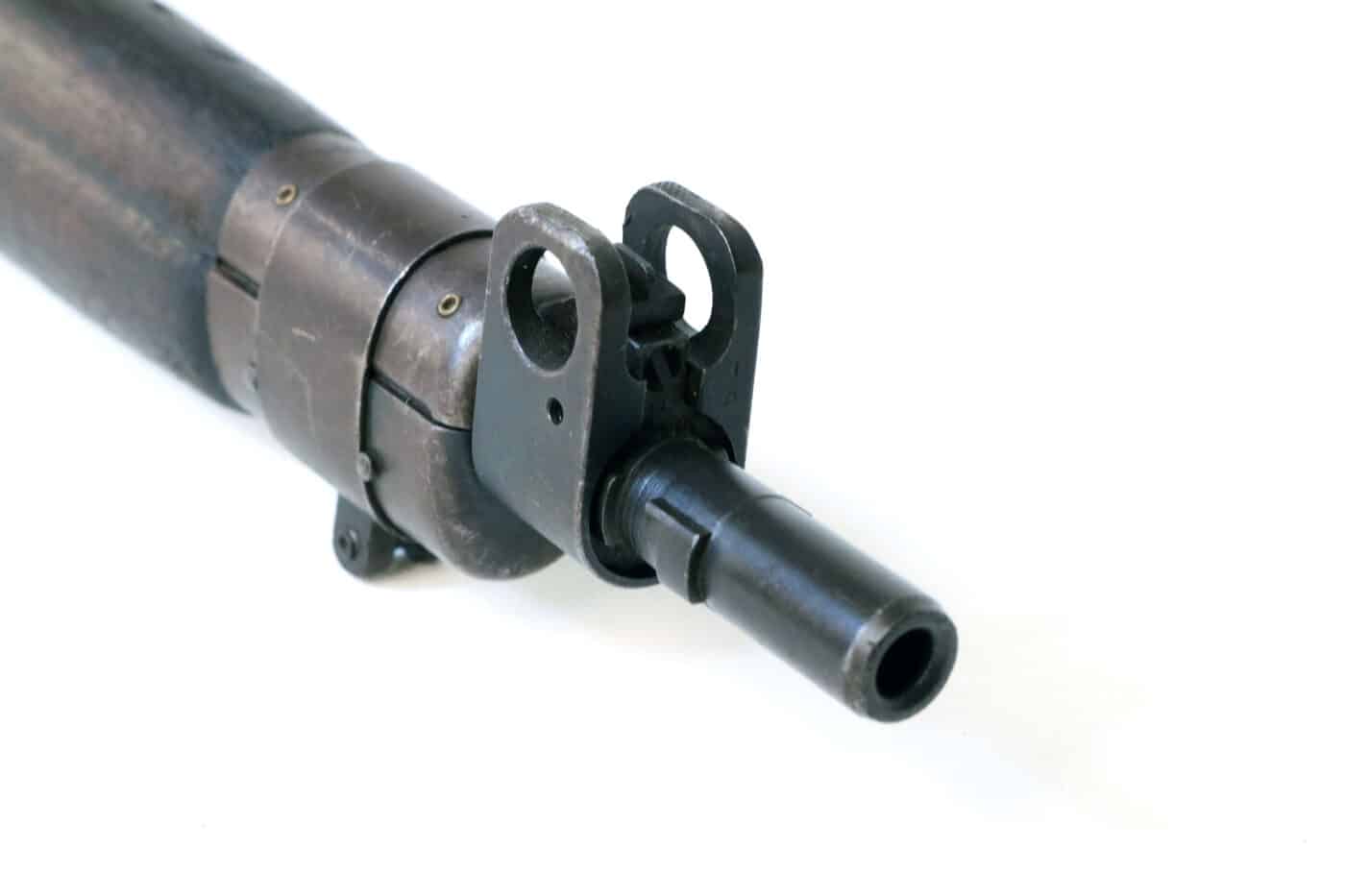
The stubby bit of barrel protruding from the nose is the easiest way to differentiate the later No 4 Mk I from the previous hognosed SMLE Mk III.
290 Canadians perished before the garrison surrendered on Christmas Day.
5,300 Canadians took part in the Aleutian campaign in August of 1943.
Period photographs depict the Canadians involved in the operations on Attu and Kiska carrying No.
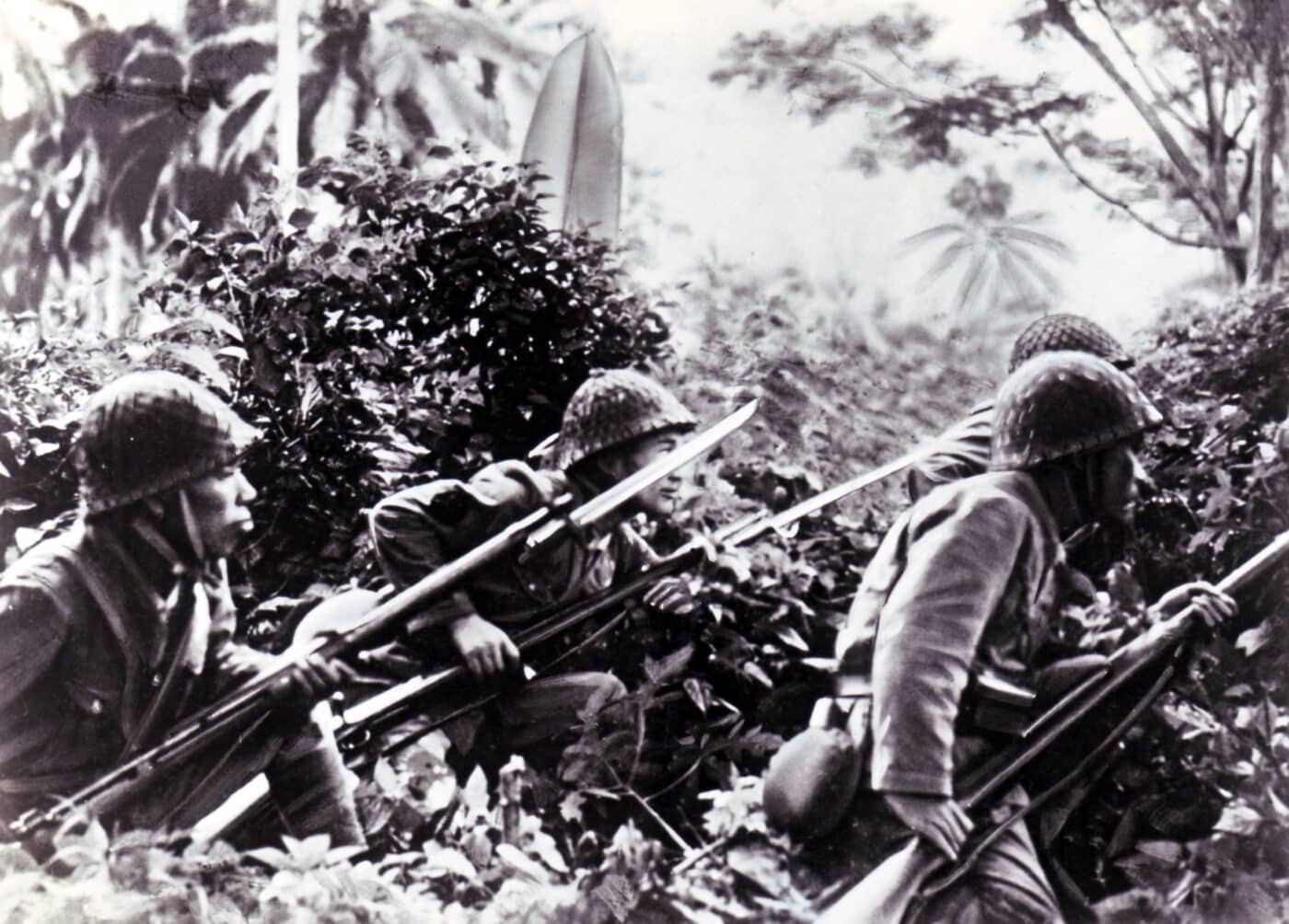
In this propaganda photo, Japanese soldiers are shown with Arisaka rifles and mounted bayonets.
4 Mk I rifles.
BSA Shirley and ROF Fazakerley produced a total of around 250,000 No.
5 Mk I Jungle Carbine versions of the Lee-Enfield for use in the Pacific Theater.
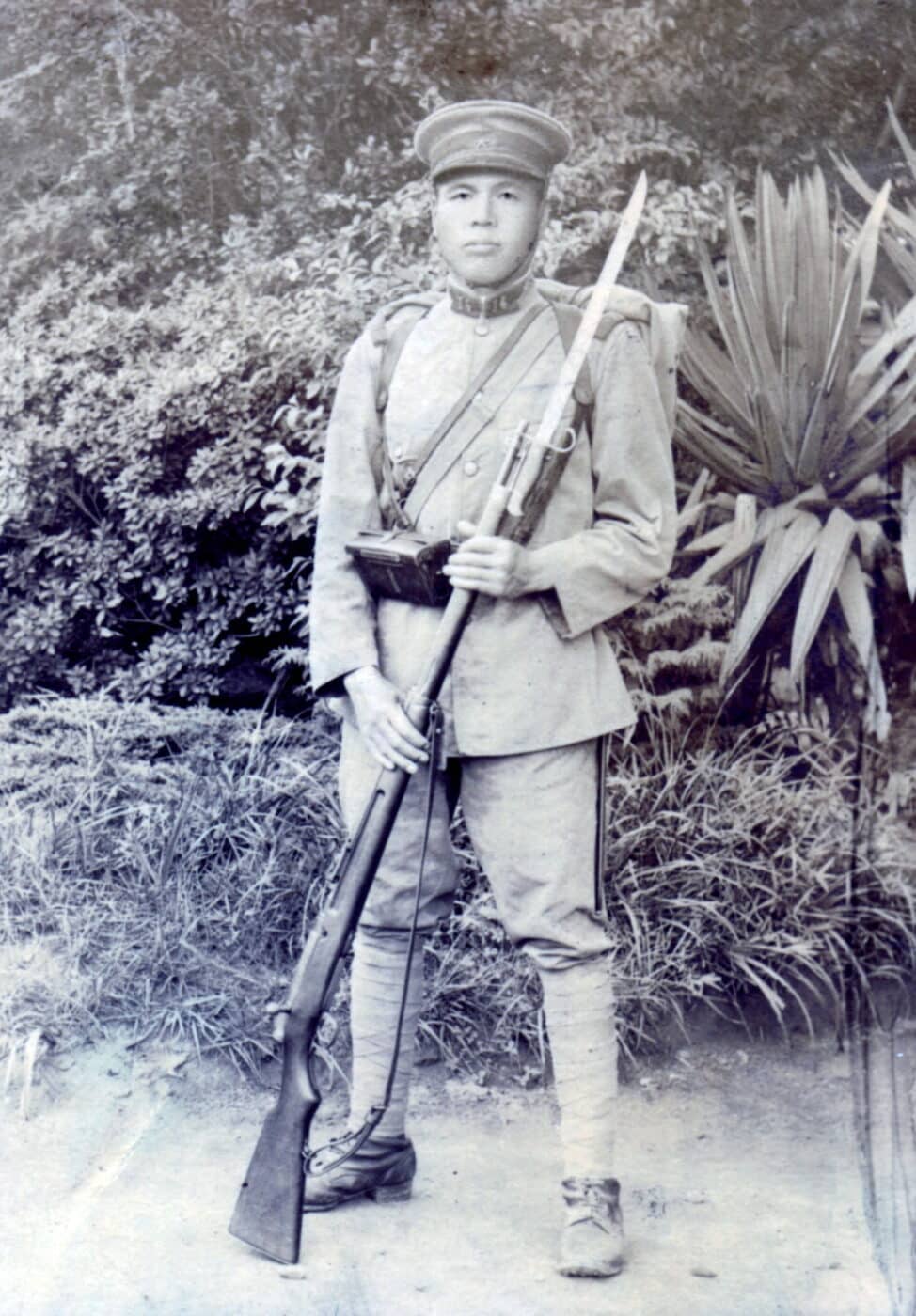
Arisaka rifles proved effective in combat. With a bayonet, the weapon could be quite intimidating.
This short-barreled variant of the No.
4 Mk I used the same action but incorporated a conical flash suppressor.
Recoil was fairly epic.
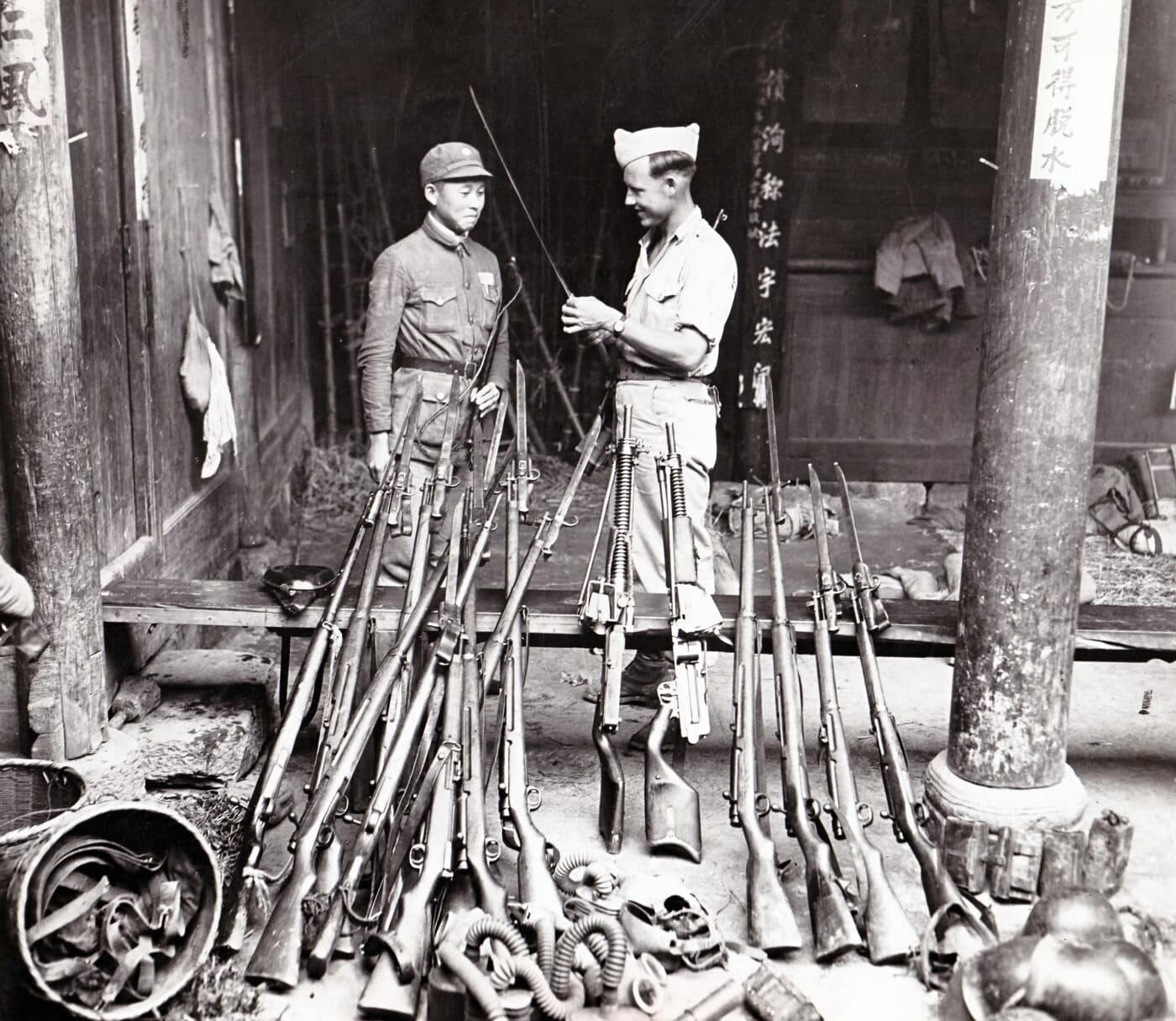
This cache of Japanese weapons were collected in China. Shown are Arisaka rifles, machine guns and even gas masks.
The jot down 38 was designed in 1905 and produced until 1942.
The subsequent shorter bang out 99 shared a similar action but fired the heavier 7.7x58mm round.
These weapons were frequently called Arisakas in reference to their primary designer Colonel Arisaka Nariakira.
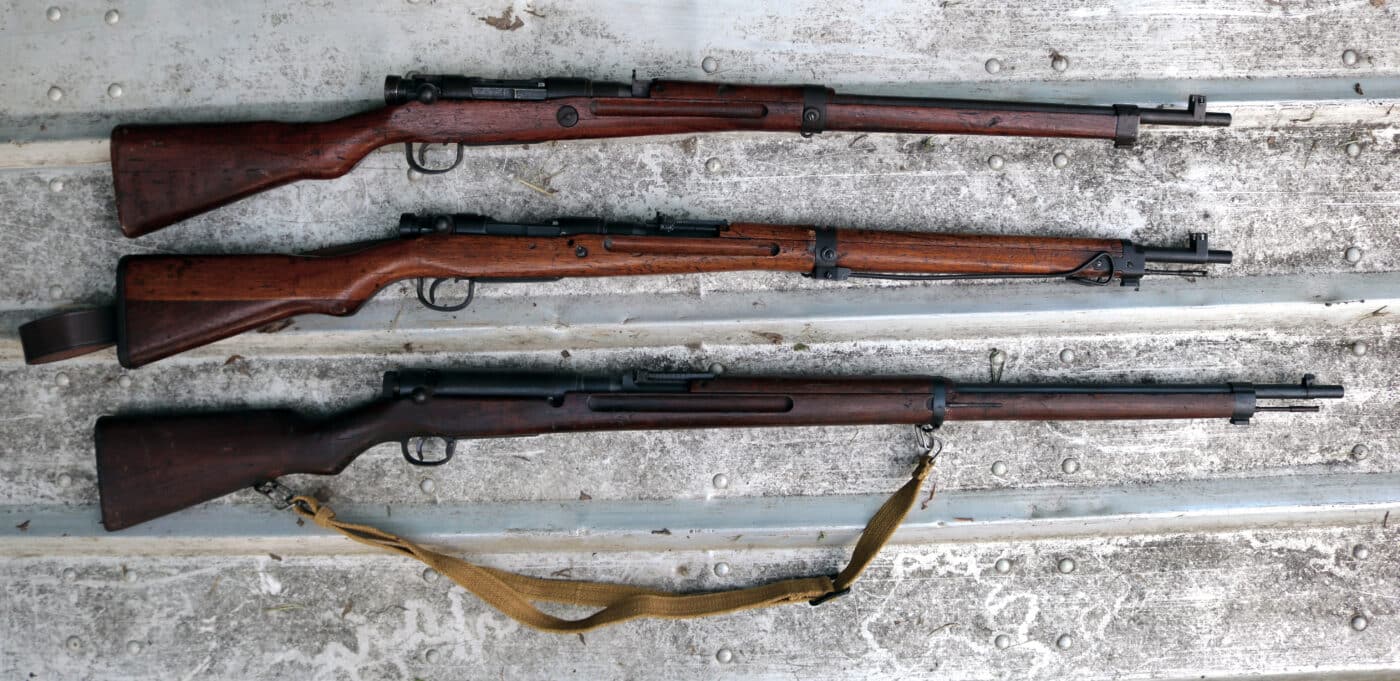
From bottom to top are the Type 38, the Type 99 and the Last Ditch Type 99 rifles. These were the most common rifles carried by Japanese soldiers.
The safety was a big knob on the back of the receiver.
To manipulate it you would press in with the palm and rotate the knob in the desired direction.
Early safety knobs were heavily knurled to conjure a vaguely chrysanthemum vibe.
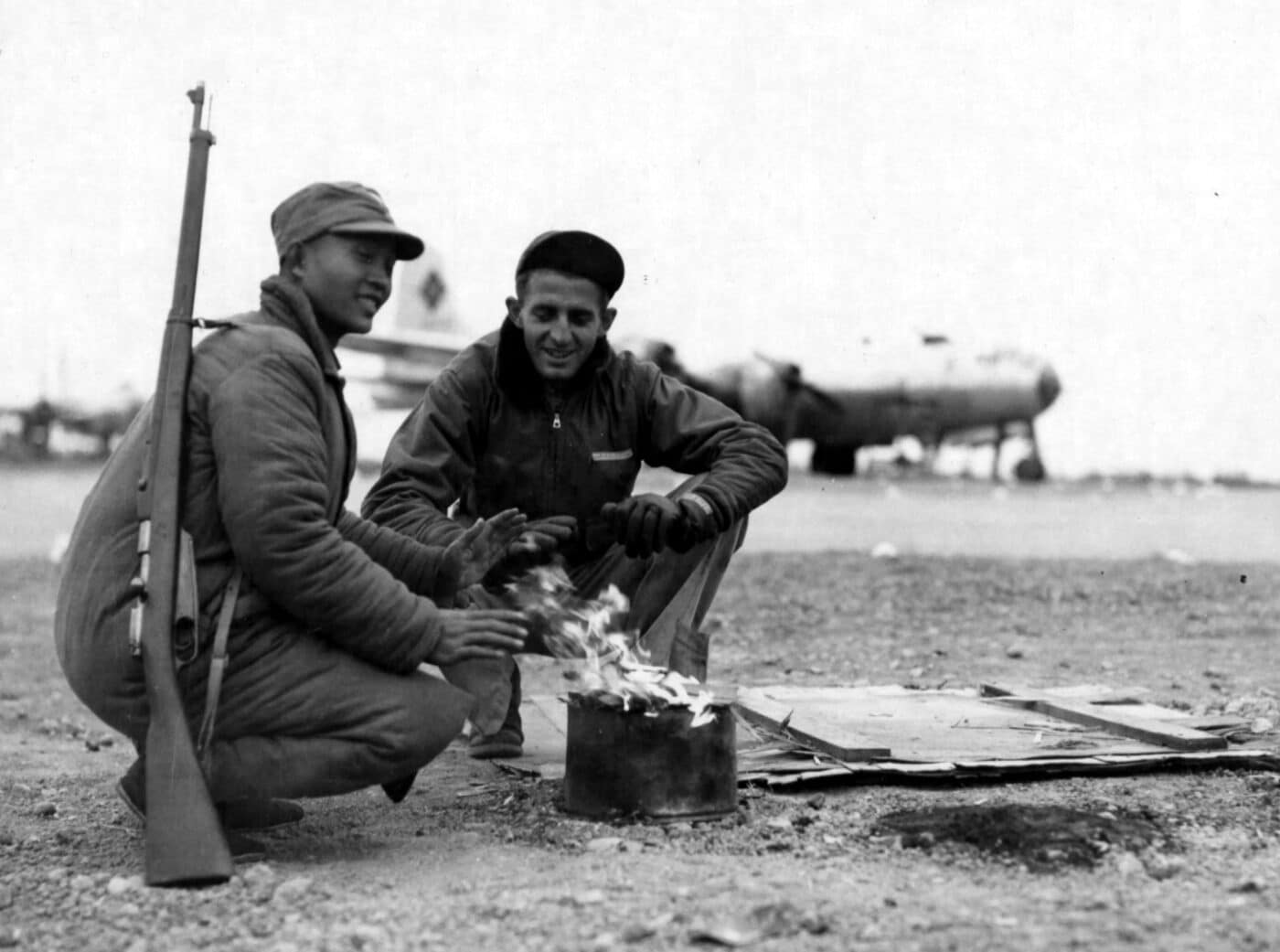
A Chinese soldier shares a fire with a U.S. airman near a B-29. The Chinese soldier is armed with either a Gewehr 88 or a Chinese copy.
These guns served everywhere the Japanese fought.
Veterans brought these weapons home by the thousands as souvenirs.
Most vet bring-back guns have had the emperors chrysanthemum mark on the receiver ring ground away.
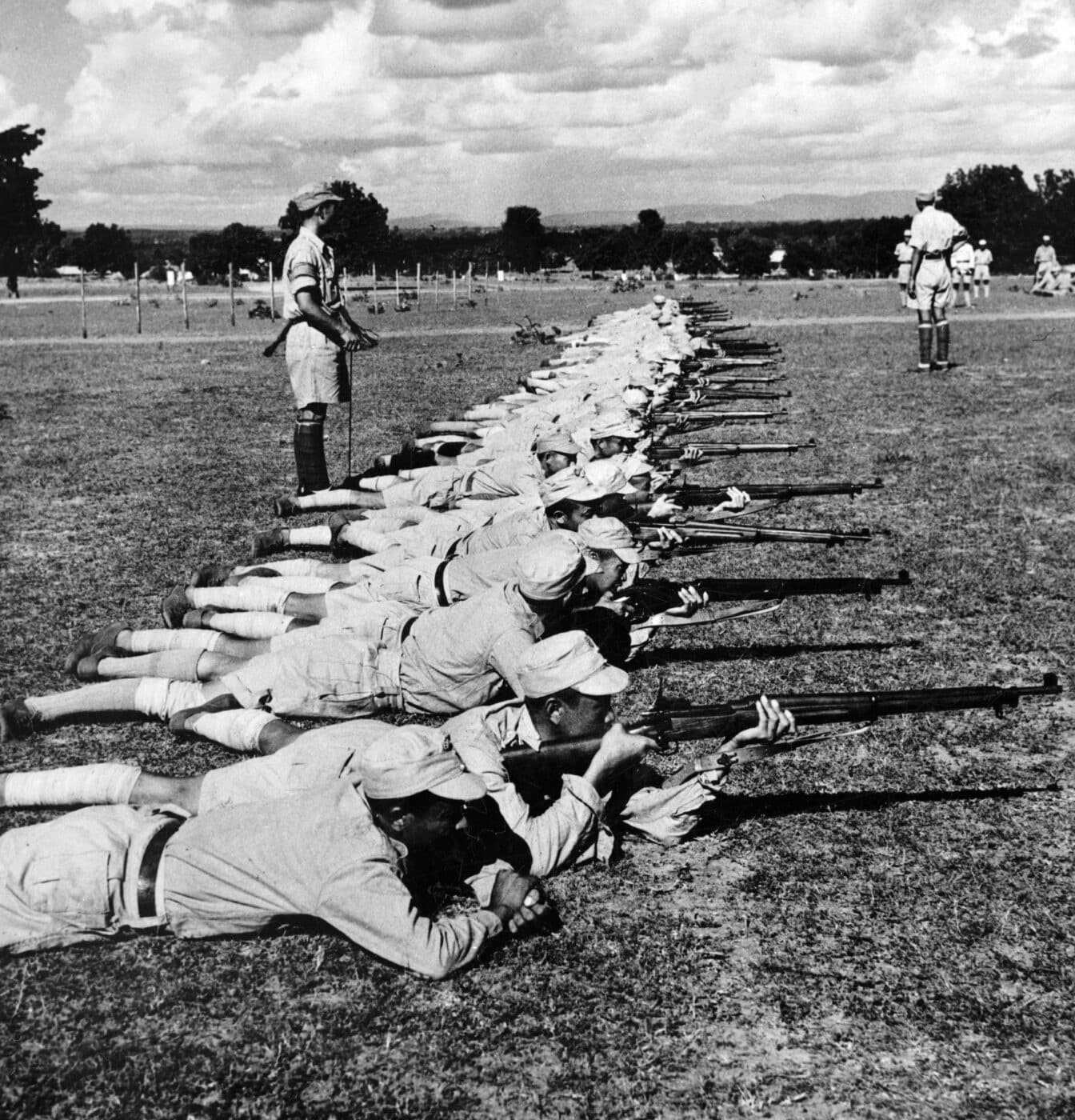
These Chinese troops train with M1917 rifles from the United States during World War II.
The Chinese produced around a million copies before manufacture wrapped up in 1944.
The Chinese Chiang Kai-Shek rifle was a local copy of the German Mauser 98k carbine.
Other Chinese weapons included the FN Model 1924, the Mosin-Nagant 1891 and the Italian Carcano 1891.
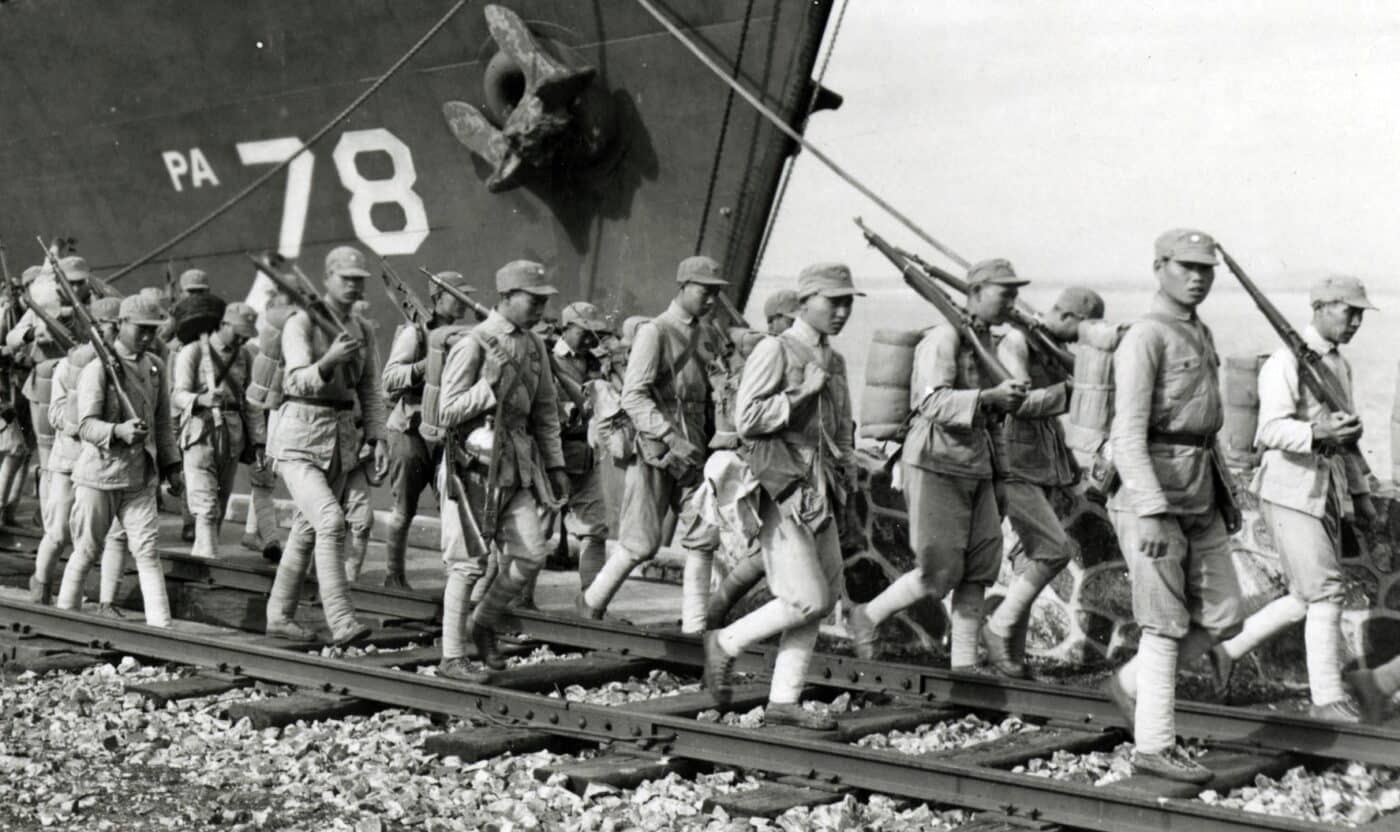
These Chinese nationalist troops are equipped with 1903 Springfield rifles. The photo was taken in late 1945 in front of the USS Cullman.
The Chinese used American-suppliedM1917 Enfields,M1903A3 Springfields, and M1 Carbines as well.
Keeping those disparate calibers supplied in an austere environment must have been a Gordian chore.
Ruminations
The Russians joined the Pacific War just twenty-four days before the Japanese capitulation.
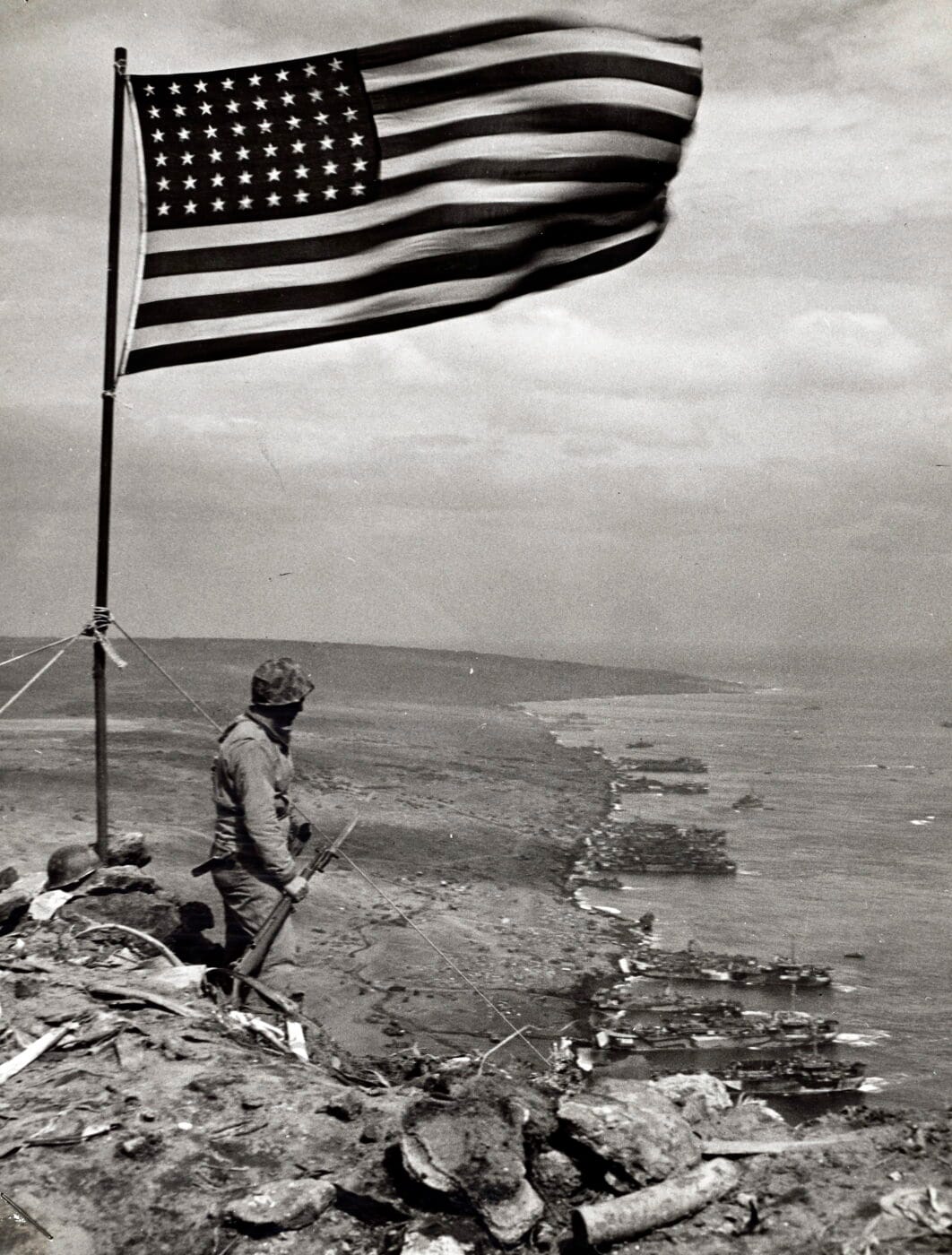
A U.S. Marine and his M1 Garand stand watch over thebeaches of Iwo Jima. Nearly 35 million people died in the Pacific Theater of World War II.
The Soviets made widespread use of the Mosin-Nagant M1891 everywhere they fought.
The Pacific War spanned thousands of miles and ultimately claimed some 6.5 million combat troops.
27 million civilians perished.

Cultural influences from that global war shape the geopolitics of our modern world even today.
Special thanks towww.worldwarsupply.comfor the cool replica gear used in our photographs.
Go to forum thread




